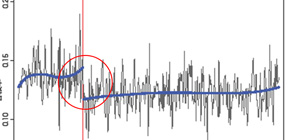
Increased risk of suicide in adolescence due to age disadvantage verified
Being born early in the year affects more than just when children enter school
A group of researchers led by MATSUBAYASHI Tetsuya (Associate Professor, Osaka School of International Public Policy, Osaka University) and UEDA Michiko (Research Assistant Professor, Syracuse University (U.S.)) clarified that those who were born right before the school cutoff date (in the case of Japan, April 2, specifically) and thus are the youngest among their peers have higher mortality rates by suicide, some 30 percent, than their peers who were born right after the cutoff date and thus are older. It has often been reported on the possibilities that differences in age at the entry to school would have an effect on academic and/or athletic performances. By using strict methods, this group verified for the first time that this age disadvantage will affect individuals' health condition and increase risk of suicide in adolescence, and that its influence remains for a long time after mandatory education is over.
This group's research results suggest the necessity for taking measures for children who were born right before the school cutoff date in classrooms and have a great social significance in considering child-rearing and education policies in Japan, which faces serious concerns such as aging and low birth rate.
Objective
Evidence collected in many parts of the world suggests that, compared to older students, students who are relatively younger at school entry tend to have worse academic performance and lower levels of income. This study examined how relative age in a grade affects suicide rates of adolescents and young adults between 15 and 25 years of age using data from Japan.
Method
We examined individual death records in the Vital Statistics of Japan from 1989 to 2010. In contrast to other countries, late entry to primary school is not allowed in Japan. We took advantage of the school entry cutoff date to implement a regression discontinuity (RD) design, assuming that the timing of births around the school entry cutoff date was randomly determined and therefore that individuals who were born just before and after the cutoff date have similar baseline characteristics.
Results
We found that those who were born right before the school cutoff day and thus youngest in their cohort have higher mortality rates by suicide, compared to their peers who were born right after the cutoff date and thus older. We also found that those with relative age disadvantage tend to follow a different career path than those with relative age advantage, which may explain their higher suicide mortality rates.
Conclusion
Relative age effects have broader consequences than was previously supposed. This study suggests that policy intervention that alleviates the relative age effect can be important.
The Rate of Suicide by Date of Birth
To learn more about this research, please view the full research report entitled "Relative Age in School and Suicide among Young Individuals in Japan: A Regression Discontinuity Approach" at this page of the PLOS ONE website.
